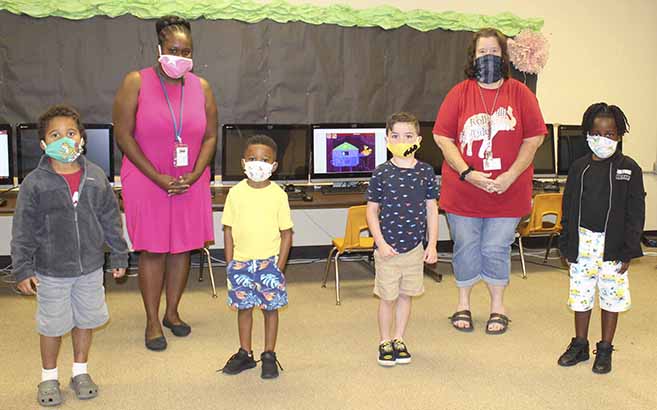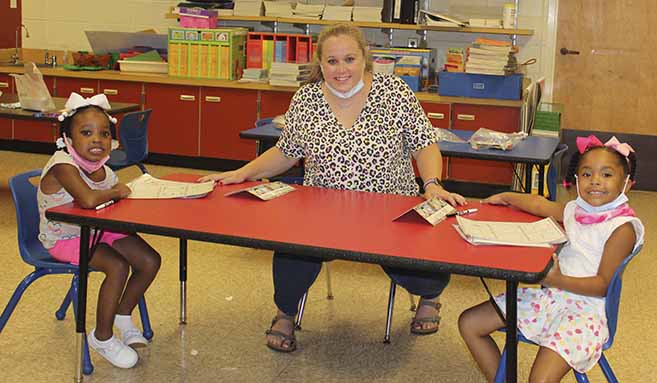Also a glimpse into the new way of doing school



Above with masks below without masks.

By SHERRY DIGMON
News Publisher
The Jumpstart classroom might give you a glimpse into what the upcoming school year might be like – on a very small scale.
The three-week program, under way at Rachel Patterson Elementary School, is limited to 10 five-year-old students in each of the two classes. There is no daily attendance requirement so class size varies from day to day. Thursday, July 16, one class had four students, another had two, even though both had started with six each.
So what do kids learn at Jumpstart? Well, they study math and reading, and they learn computer skills.
And this year, they’re also learning about wearing masks and not touching their classmates. They’re learning to sing the “ABC Song” while they wash their hands because it takes 20 seconds to sing the song through. (Twenty seconds is the recommended guideline for the time to thoroughly wash your hands – for kids and adults.)
This group of kids will be ready to start kindergarten in a few weeks, and it will unlike the start of any other school year ever. But in the classroom setting, they seem unperturbed by it all.
Teachers Kristie Harris and Katie Camp, along with aides Debra Smith and Vonda Bynum, keep a close watch on their students, even when there are just a few.
Jumpstart is in session from 7:30 a.m. until 11:30, Monday through Thursday. The program ends Thursday, July 23. First, students eat breakfast, then go over the process for washing hands and distancing. A math game and activity are followed by computer lab with educational programs, reading and a craft to finish the session.
A visitor to the classroom might note that students are not easily distracted when they’re on the computer. They’re all in.
“The best thing about the program is that the students are learning how to interact but distance, not touch,” Kristie said. “They really do understand about the virus. They’re very aware.”
On this particular day, Katie had only two students in her class.
“This has been different,” she said. “It’s hard not to love on them.”
While keeping their masks up, the teacher and students can’t see each other smile, and Katie finds that hard to deal with. They’ve worked out a system of squinching their eyes to indicate a smile. Katie has gotten a face shield which enables the students to see her mouth when they’re working with letters and she’s sounding them out.
Masks and distancing have not been a problem in this classroom either.
“It’s sad but it’s amazing how much they pick up on,” Katie said.
